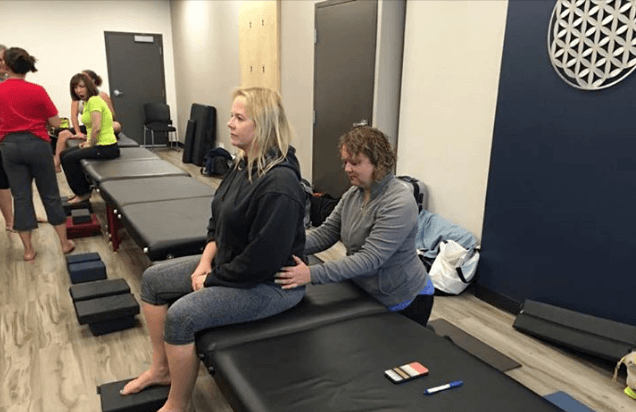Since 2016, the Centers for Disease Control and Prevention (CDC) and European guidelines have recommended manual therapy as first- line treatment for MSK ill-health. Manual therapy is an approach where Practitioners of Manual Therapy (PoMT) use hands-on data acquisition and analysis (HODA-A) as a measurement instrument for research, diagnosis, prognosis, and a tool for treatment. Yet manual therapy techniques fail all reliability studies, therefore without proof that hands-on is a valid and reliable method of data collection, this very much limits the conclusions that can be drawn from using the hands in MSK healthcare.
INTRODUCTION
HYPOTHESIS
Tester rotation. When palpatory-based methods and observation-based methods are used in isolation (two testers) at the same time, the results gained during a musculoskeletal screening of a person will be similar?
RECRUITMENT
Twenty-three healthy volunteers with recognised manual therapy qualifications (one man aged 36 years and 22 women aged 39.5 ± 9.4 years) were recruited within manual therapy learning institute. Of the volunteers, six women aged 46 ± 8.6 years with 18 ± 9.5 years’ experience were the randomly allocated to be tester’s.

The same paired testers from study 1 were asked to switch their methods of assessment i.e., from palpatory-based methods to observational-based methods, and vice versa, and repeat the same methodology as the previous experiment. Again, only one round of testing was conducted and there was no true result for these studies. Upon completion of the study, the testers were allocated a two-minute break and not discuss the experiment with one another prior to the next experiment, study 3.

Prior to any data collection, the examiner set-up each testee in all studies to meet the specific criteria that had evolved from preceding experiments. A reflective journal was kept by the examiner noting observations from the testee’s and testers during each experiment. This reflection prevented any impaired memories when recalling the experience over a longer time frame (Almeida, 2005). The examiner oversaw all experiments, journaled any events that may be of interest, and analysed the final data submitted by the tester’s.

To investigate the outcomes when controlling two HODA-A measurement theories (Figure 41) in isolation: observation-based methods (3.5.2 Construct 2, Sensory cross-model judgement), and palpatory-based methods (3.5.3 Construct 3, Sensory stimulation). Two paired testers were randomly allocated to use either their HODA-A observation-based methods (Construct 2) or their palpatory-based methods (Construct 3), in isolation, to test the testee’s seated pelvic rotation and provide the relative position of the left and right innominates (Figure 43). For the palpatory-based method, the tester was asked to close their eyes and kneel behind the seated testee with their knees flexed to 90 degrees, hips extended, and arms reached forward. For the observation-based method, the tester either knelt or squatted behind the palpatory-based tester with their arms by their sides, observing the palpatory-based methods of their paired tester. Blinded to one another, both testers completed, and submitted, a data ticket (Appendix 27). The testers then moved to the next testee and only one round of testing was conducted. There was no true result for these experiments. The seated testee’s were identified with a numbered sticky label and chose where to place their arms. Once the experiment began, they were instructed not to fidget, talk, chew, or look around the room, they were to focus on something that was parallel to their sight of view.
Conclusion
A lower level of inter-tester reliability was achieved when the testers switched their HODA-A constructs. Learning from the tester’s experiences during these three experiments may provide further understanding as to why the reliability levels got worse.



0 responses on "STUDY 2"